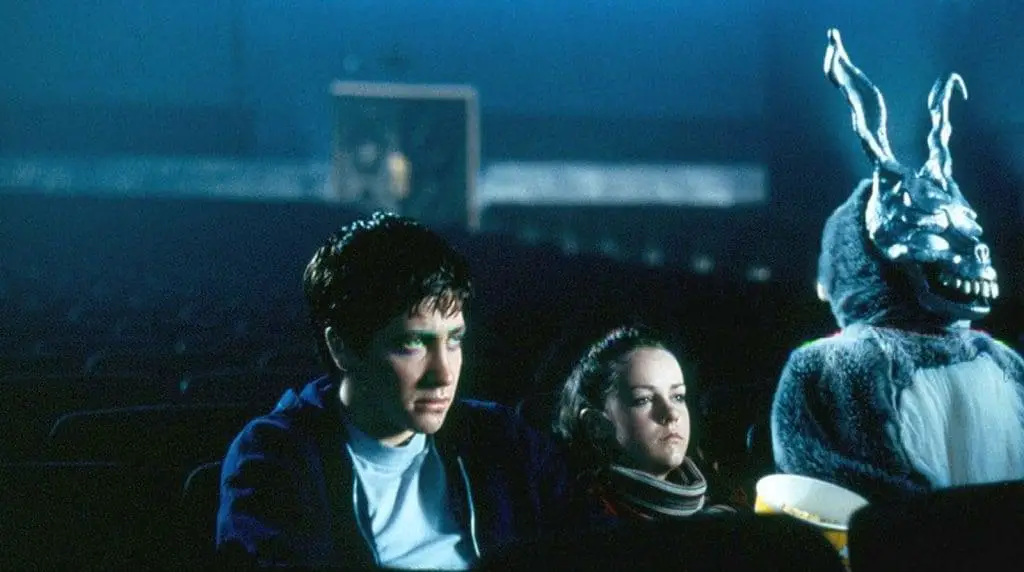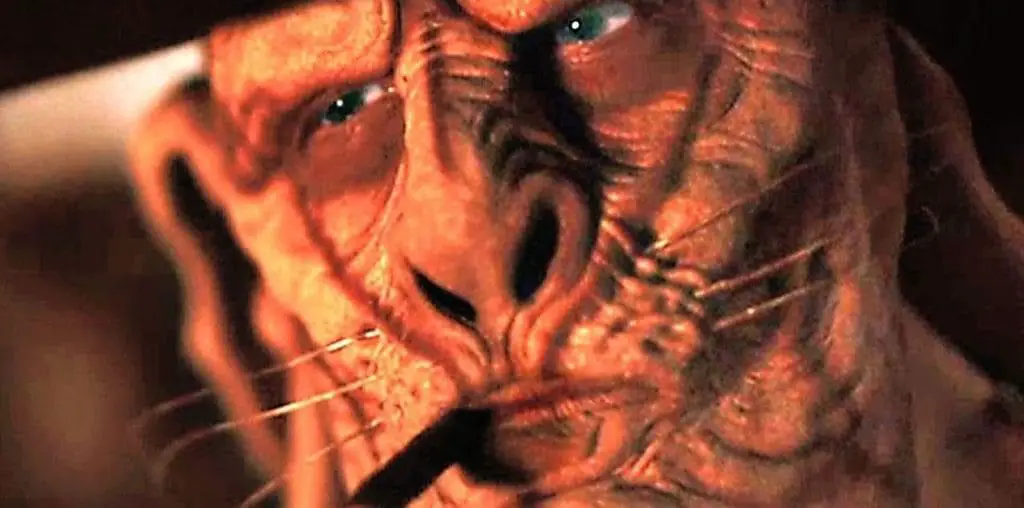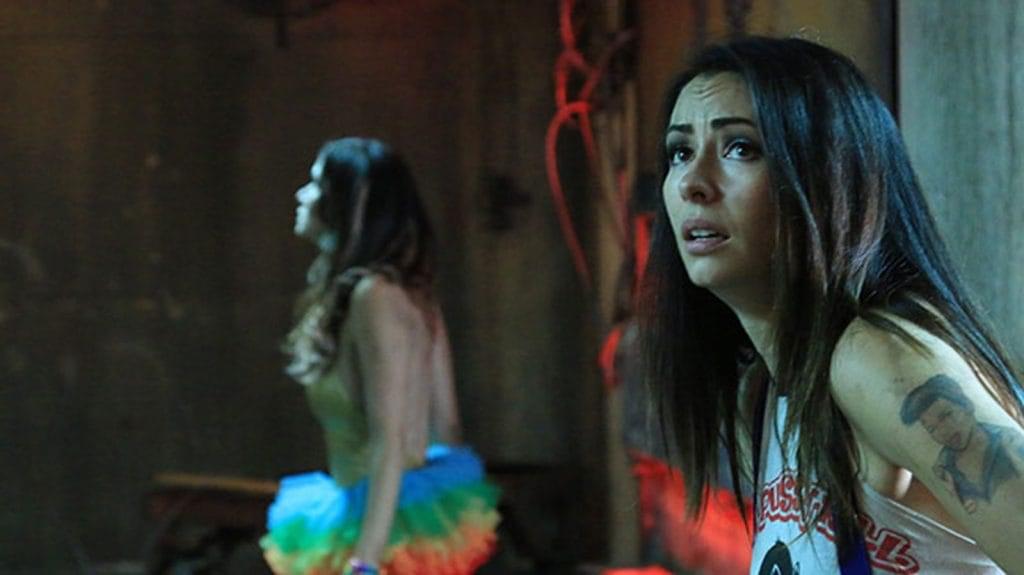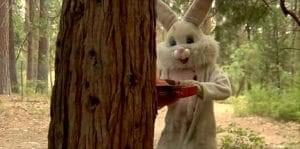
Carl Lindbergh’s Bunnyman: Grindhouse Edition (henceforth BGE) is an expanded, re-edited version of the writer/director’s Bunnyman from 2011. For those who aren’t familiar, the story of both films concerns a group of six young adults who find themselves stranded in a rural part of Southern California. They then spend most of the movie trying to run away from a chainsaw-wielding killer who’s dressed in a full-body bunny costume.
I haven’t seen the original Bunnyman, so what I’m about to say may not be entirely correct. But if Lindbergh’s statement on it is any guide, BGE doesn’t make significant changes to the original’s basic plot. Instead, as the subtitle “Grindhouse Edition” suggests, this aspires to be meta, offering a parodic tribute to what Lindbergh calls “the Grindhouse/Exploitation films of the 1970s.”
In practice, this means that BGE takes on several stylistic features that do nothing by themselves to advance the story. The entire movie, for instance, is characterized by a grainy overlay, as though Lindbergh wanted to imitate the poor quality of flicks that typically played in actual grindhouses. Other add-ons include footage of commercials from the ’70s, a mock trailer for the sequel to the original Bunnyman, and extraneous footage of a woman being slashed to death in a shower.
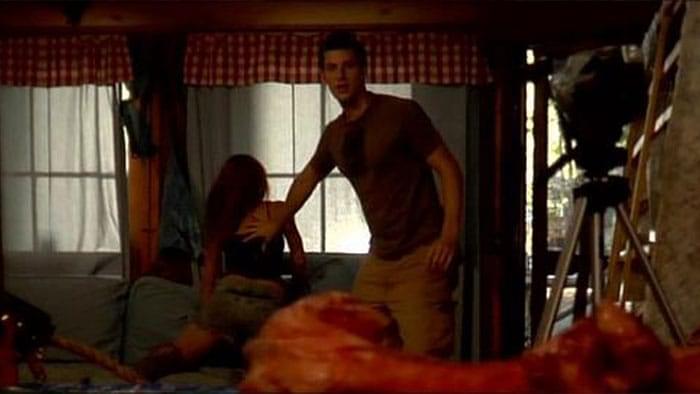
“…a group of six young adults…run away from a chainsaw-wielding killer…in a full-body bunny costume.”
I confess that I’m anything but an expert in horror films. That said, if you’re a fan of B-horror movies, I suspect you’ll probably find something to like here. The various techniques that I previously described aren’t exactly subtle, and their novelty fades pretty quickly. Yet to the filmmaker’s credit, he does succeed in creating a retro atmosphere. When watching BGE, you’ll feel as though you’d been transported back to the heyday of grindhouse cinema.
Despite all of this, however, I guess that you’d have to be a very, very, very devoted horror enthusiast to be able to overlook the film’s many flaws. Like so many slashers, BGE is deeply misogynistic. Whether they’re whimpering victims or villainous sadists, the female characters are invariably assigned degrading roles. Their deaths are often depicted in a bloody, graphic manner that borders on the pornographic. There are also precious few surprises or original spins on the genre to be found.
Beyond its reliance on tropes that many horror movies share, however, the narrative also turns out to be uniquely boring and nonsensical. For one, the main characters spend most of BGE wandering through the woods, arguing, or engaging in drawn-out (and ultimately meaningless) conversations with strangers. In the few moments when actual suspense comes a-knocking, it resorts to plot turns that feel forced, implausible, and at times downright silly.
Defenders of Bunnyman and its numerous spin-offs would probably argue that such productions are meant to be “guilty pleasures.” Therefore, criticisms such as these are missing the point. Perhaps. But if you ask me, this kind of “badness” isn’t the kind that turns out to be unexpectedly entertaining. Rather, it’s the kind of shoddiness that proves unbearably painful to watch. So much so that the 90-minute runtime feels more like 15. Ultimately, Lindbergh’s attempts at inducing nostalgia for the grindhouse era can only do so much for what ends up being a near-total train wreck.
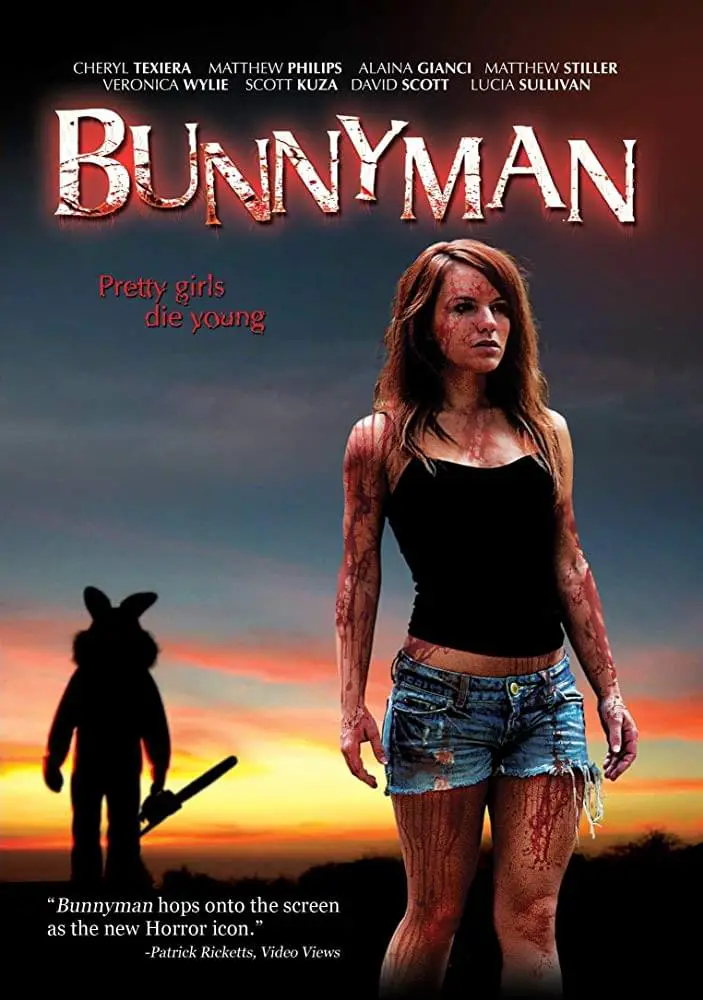
"…does succeed in creating a retro atmosphere."
